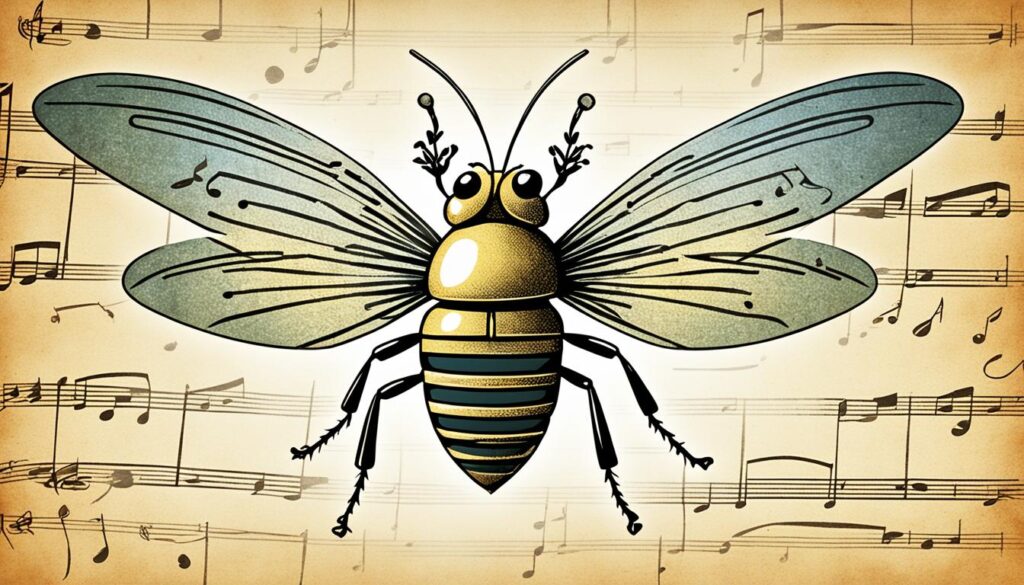Welcome to our tutorial on learning how to play “Bug Like an Angel” chords. Whether you’re a beginner or an aspiring guitarist, this comprehensive guitar lesson will provide you with easy chords and expert guidance to help you master this tune.
Learning new chords can sometimes be challenging, but with our step-by-step instructions and practice tips, you’ll be strumming along to “Bug Like an Angel” in no time.
Chord and Melody Metrics for Fireworks
The song “Fireworks” showcases a range of chord and melody metrics that contribute to its unique sound. The chord complexity of “Fireworks” is rated at 31, highlighting the intricate nature of the chords used throughout the song. In addition, the melodic complexity is rated at 53, reflecting the intricacy and sophistication of the song’s melody.
Furthermore, “Fireworks” stands out with its high scores in chord-melody tension, chord progression novelty, and chord-bass melody. The chord-melody tension refers to the harmonic tension created by the combination of chords and melody. The chord progression novelty indicates the innovative nature of the chord progression used in the song. Lastly, the chord-bass melody emphasizes the importance of the bass notes in enhancing the overall melodic structure.
To learn and play “Bug Like an Angel” with a similar chord progression and melody complexity to “Fireworks,” we have provided tabs that illustrate the specific chords used in the song. Additionally, we recommend following the suggested strumming pattern and progression to capture the essence of the original composition.
| Chord and Melody Metrics for Fireworks | |
|---|---|
| Chord Complexity | 31 |
| Melodic Complexity | 53 |
| Chord-Melody Tension | High |
| Chord Progression Novelty | High |
| Chord-Bass Melody | High |
By incorporating these chord and melody metrics into your guitar playing, you can add depth and complexity to your rendition of “Bug Like an Angel.” Experiment with different chord voicings and variations to create your own unique interpretation.
Key of G Major
“Bug Like an Angel” is written in the key of G Major, which is a popular key for many songs. In G Major, the main chords are G, C, and D. These chords form the foundation of the song and create a bright and uplifting sound.
To play the chords of “Bug Like an Angel,” it’s helpful to refer to the G Major Cheat Sheet. This cheat sheet provides popular chord progressions in the key of G Major, as well as downloadable midi files to practice along with. Using these resources will help you familiarize yourself with the chords and develop your playing skills.
In addition to G, C, and D, there are other chords that can be used in the key of G Major to add variety and color to your playing. These include Em, Am, and Bm. Experimenting with different chord combinations and progressions will allow you to create your own unique interpretation of “Bug Like an Angel.”
Remember to pay attention to the strumming pattern and rhythm when playing in the key of G Major. This will give the song its distinctive feel and groove. Practice playing the chords smoothly and transitioning between them seamlessly to achieve a polished sound.
Benefits of Playing in G Major Key
The key of G Major offers several advantages for guitar players. Here are a few benefits:
- Versatility: G Major is a versatile key that can be used in various musical genres, including pop, rock, country, and folk.
- Beginner-Friendly: The chords in G Major are relatively easy to play, making it a great key for beginners to practice their chord transitions and strumming techniques.
- Bright and Upbeat: The G Major chords create a bright and upbeat sound, making it perfect for uplifting and energetic songs.
By mastering the chords in the key of G Major, you’ll not only be able to play “Bug Like an Angel” but also expand your repertoire and confidently tackle other songs in the same key.
| Chord | Symbol | Notes |
|---|---|---|
| G | I | G – B – D |
| C | IV | C – E – G |
| D | V | D – F# – A |
| Em | vi | E – G – B |
| Am | ii | A – C – E |
| Bm | iii | B – D – F# |
Remember to practice these chords and their fingerings regularly to build muscle memory and improve your playing. With time and dedication, you’ll be able to master “Bug Like an Angel” and other songs in the key of G Major.
About the Song Structure
The song “Bug Like an Angel” features a well-defined song structure consisting of different sections, including the verse, chorus, bridge, and outro. Understanding the song structure is key to navigating through the chords and transitions smoothly, allowing you to capture the essence of the melody and convey the emotions embedded within the lyrics. Let’s explore each section in detail:
Verse
The verse serves as the primary storytelling component of the song. It sets the stage for the narrative and provides the foundation upon which the chorus and other sections are built. In terms of chord progression, the verse often follows a specific pattern that evokes the desired mood of the song.
Chorus
The chorus is the most memorable and catchy part of the song. It typically features a more energetic and melodic approach, with the lyrics and chord progression aimed at leaving a lasting impression on the listener. The chorus often serves as the emotional climax of the song.
Bridge
The bridge is a transitional section that adds variation to the song’s structure. It provides a refreshing change of pace and often introduces new musical elements, such as different chords or a shift in melody. The bridge can serve as a moment of reflection, adding depth and complexity to the overall composition.
Outro
The outro is the concluding section of the song. It brings the music to a gradual or abrupt end, often leaving the listener with a lingering feeling or thought. The outro may incorporate elements from previous sections, providing a sense of closure or leaving room for interpretation.
Understanding the song structure of “Bug Like an Angel” allows you to analyze and appreciate the composition on a deeper level. By recognizing the patterns and transitions within each section, you can effectively interpret the song’s message and convey its intended emotion through your interpretation.
Now that we have explored the song structure, let’s dive into the intricate chord progressions and techniques that make “Bug Like an Angel” a captivating piece to play on the guitar.

Chord Complexity and Difficulty
When it comes to playing “Bug Like an Angel” chords, the level of complexity and difficulty can vary depending on your skill level. As a beginner, you may find certain chords challenging at first, but don’t let that discourage you! With practice and dedication, these chords can be mastered.
It is always advisable to start with simpler versions of the chords and gradually work your way up to more complex ones. This approach allows you to build a strong foundation and develop the necessary finger dexterity and muscle memory to tackle the more challenging chords in the song.
Don’t be afraid to break down the chords into smaller parts and practice them individually. This will help you understand the finger placements and transitions required for each chord. Take your time and practice at a comfortable pace, ensuring accuracy and clarity in each chord.
As you gain confidence and proficiency, gradually increase the tempo and challenge yourself with more intricate chord progressions. Remember, learning to play the guitar is a journey, and it’s essential to embrace the process and celebrate your progress along the way.
Stay motivated and practice regularly. Consistency is key to improving your skills and overcoming any difficulties you may encounter. Don’t hesitate to seek guidance from experienced guitar players or consider taking lessons to enhance your learning journey.
Key Points:
- Start with simpler versions of the chords and gradually progress to more complex ones.
- Break down chords into smaller parts and practice them individually.
- Practice at a comfortable pace, ensuring accuracy and clarity in each chord.
- Increase the tempo and challenge yourself with more intricate chord progressions as you gain confidence.
- Stay motivated, practice regularly, and seek guidance from experienced players if needed.
Tips:
- Use a metronome to develop your sense of rhythm and timing.
- Record yourself playing to identify areas that need improvement.
- Experiment with different strumming patterns to add variety to your playing.
- Join a community of fellow guitar enthusiasts for support and inspiration.
- Enjoy the process and celebrate your progress!
Tips for Beginners
If you are a beginner learning “Bug Like an Angel,” it is essential to start slow and focus on getting the basic chords right. Remember, practice makes perfect! Here are some useful tips to help you along the way:
- Start Slow: Begin by practicing one chord at a time. Familiarize yourself with each chord shape and make sure your fingers are properly positioned. Take your time to get comfortable before moving on.
- Use a Metronome: Practicing with a metronome is a great way to develop your sense of timing. Start with a slow tempo and gradually increase the speed as you gain confidence.
- Perfect Chord Transitions: Smooth chord transitions are crucial for playing “Bug Like an Angel” seamlessly. Practice transitioning between chords slowly and accurately. Focus on maintaining a steady rhythm throughout.
- Master Strumming Patterns: Strumming patterns add rhythm and texture to your playing. Start with simple strumming patterns and gradually incorporate more complex ones as you progress. Pay attention to the song’s feel and match your strumming accordingly.
- Break the Song Down: If certain sections or chord progressions are challenging, break them down into smaller parts. Practice each section individually before putting them together. It’s perfectly normal to take your time and focus on mastering one section at a time.
- Don’t Get Discouraged: Learning the guitar takes time and patience. Don’t get discouraged if you make mistakes or find certain chords difficult at first. Keep practicing consistently, and you’ll gradually improve. Celebrate small victories along the way!
Remember, learning to play “Bug Like an Angel” chords is a journey. Enjoy the process and have fun exploring the sounds of your guitar. With practice and perseverance, you’ll be playing this beautiful tune with ease.

Keep pushing yourself to learn new chords, songs, and techniques. The more you practice, the more you’ll progress as a guitarist. Don’t hesitate to seek guidance or take lessons if you need extra support. Happy playing!
Additional Resources
Are you looking to further enhance your guitar playing skills with “Bug Like an Angel” chords? We’ve got you covered! Explore these additional resources that can provide valuable guidance and support throughout your musical journey.
Online Tutorials
If you prefer a step-by-step approach to learning “Bug Like an Angel” chords, online tutorials can be a great resource. Many websites offer comprehensive tutorials with detailed explanations of chord positions, fingerings, and strumming patterns. These tutorials often include video demonstrations and practice exercises to help you master the song efficiently.
Video Lessons
Visual learners may find video lessons particularly beneficial. Platforms like YouTube feature numerous guitar instructors who break down “Bug Like an Angel” chords and provide in-depth demonstrations. Watching experienced guitarists play the song can offer valuable insights into chord voicings, technique, and overall interpretation. Take advantage of the vast array of video lessons available online to expand your understanding and skills.
Sheet Music
“Sheet music is the roadmap to the soul of music.” – Dexter Holland

If you prefer the traditional approach to learning, sheet music can be an invaluable resource. Look for sheet music or chord charts specifically tailored for “Bug Like an Angel” chords. These resources typically provide the song’s melodic structure, chord progressions, and lyrics, allowing you to follow along with precision. Sheet music offers a comprehensive overview of the song and serves as a reference during practice sessions.
Bug Like an Angel Chords [Additional Resources]
| Resource | Description |
|---|---|
| Website A | A comprehensive collection of video tutorials, chord charts, and practice exercises for mastering “Bug Like an Angel” chords. |
| Website B | Explore in-depth lessons on “Bug Like an Angel” chords, including detailed chord voicings and strumming techniques. |
| Website C | An extensive library of sheet music resources for “Bug Like an Angel” chords, allowing you to play along with the song. |
Remember, these additional resources are designed to supplement your learning process and provide you with additional guidance. Feel free to explore and make use of the various online tutorials, videos, and sheet music available to enhance your mastery of “Bug Like an Angel” chords.
Practice Suggestions
To improve your proficiency in playing “Bug Like an Angel” chords, it is crucial to set aside regular practice sessions. Consistency and dedication are key to progressing your guitar skills. Here are some practice suggestions that can help you enhance your playing:
1. Allocate Specific Time
Set aside dedicated time for practicing your chord transitions, strumming patterns, and playing along with the song. By allocating specific time slots each day or week, you create a routine that fosters consistent progress.
2. Break It Down
Break down the song into smaller sections and practice each section individually. Focus on mastering the chord changes, rhythm, and timing for each segment before moving on to the next one. This approach allows you to focus on specific challenges and gradually build your skills.
3. Slow It Down
If you’re struggling with certain chord transitions or strumming patterns, slow down the tempo. Playing at a slower pace allows you to concentrate on accuracy and technique. As you become more comfortable, gradually increase the tempo to match the original speed of the song.
4. Use a Metronome
A metronome is a valuable tool for improving your sense of timing and rhythm. Practice playing the chords and strumming patterns in sync with the metronome’s beat. Start with a slower tempo and gradually increase the speed as you become more proficient.
5. Play Along with the Song
Listening and playing along with the original recording of “Bug Like an Angel” can significantly aid your learning process. By playing along, you can develop a better understanding of the song’s arrangement, dynamics, and timing. Pay attention to how the chords and strumming patterns interact with the vocals and other instruments.
6. Record Yourself
Record yourself playing “Bug Like an Angel” chords during your practice sessions. Listening back to your recordings can provide valuable feedback on areas that need improvement. It also allows you to track your progress over time and celebrate your achievements.
Remember, practice is the key to mastery. It may take time and effort to become comfortable with the chords and techniques involved, but with consistent practice, you’ll gradually build the skills necessary to play “Bug Like an Angel” chords with ease.
| Practice Tips | Description |
|---|---|
| Allocate Specific Time | Set aside dedicated time for practice sessions. |
| Break It Down | Practice the song in smaller sections. |
| Slow It Down | Practice at a slower tempo to focus on accuracy. |
| Use a Metronome | Develop your sense of timing and rhythm with a metronome. |
| Play Along with the Song | Learn by playing along with the original recording. |
| Record Yourself | Record your practice sessions to track progress. |

Conclusion
Congratulations! You have now learned the basics of playing “Bug Like an Angel” chords. With a little dedication and perseverance, you can continue to improve your guitar playing skills. Remember, practice is key to mastering any new song, so make sure to set aside regular practice sessions.
Playing the guitar is not just about technical proficiency, but also about having fun and expressing yourself through music. So, while you work on perfecting your chord transitions and strumming patterns, don’t forget to enjoy the process and let your passion shine through.
As you gain more confidence, don’t hesitate to explore new songs and expand your repertoire. Trying different styles and genres will help you grow as a guitarist and broaden your musical horizons. Each new song you learn will bring you closer to becoming the musician you aspire to be.
So, keep practicing, keep exploring, and keep playing the guitar. We believe in your ability to become a skilled guitarist, and we’re excited to see where your musical journey takes you!